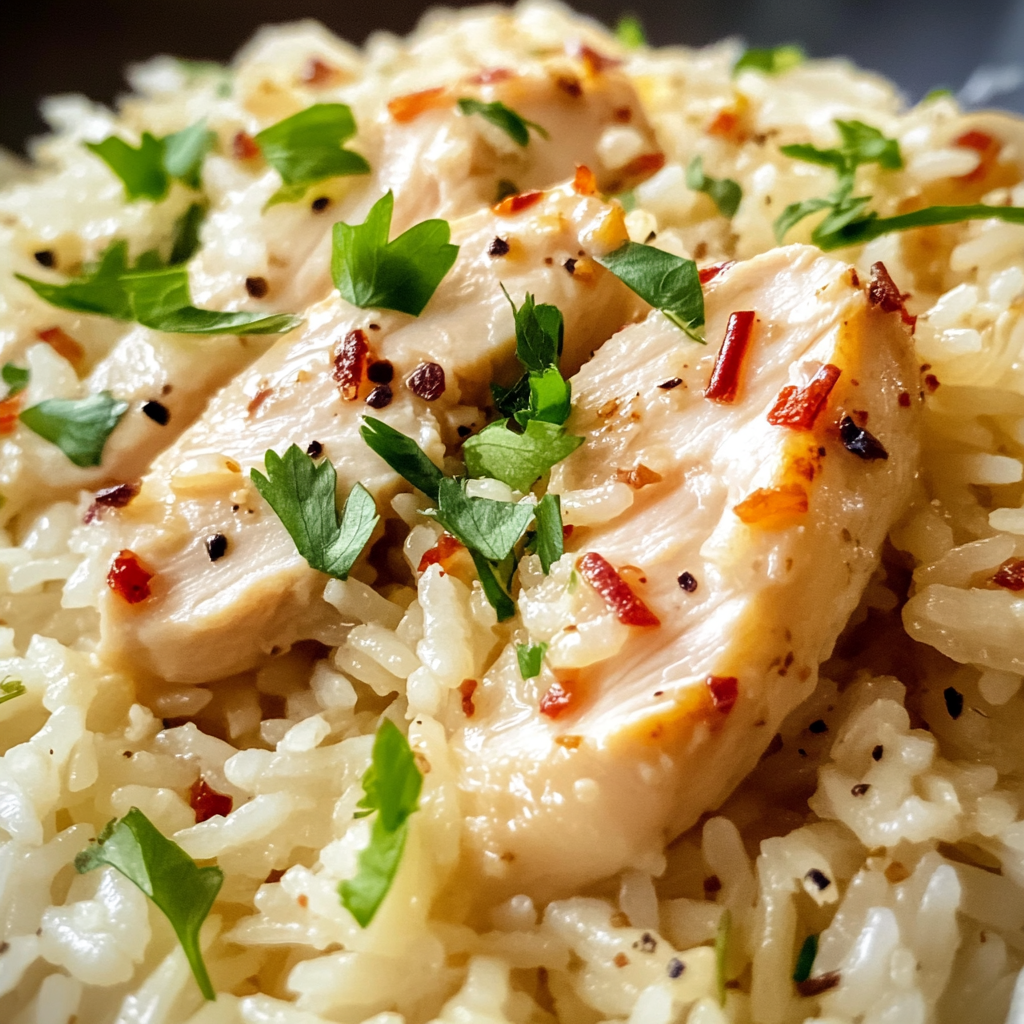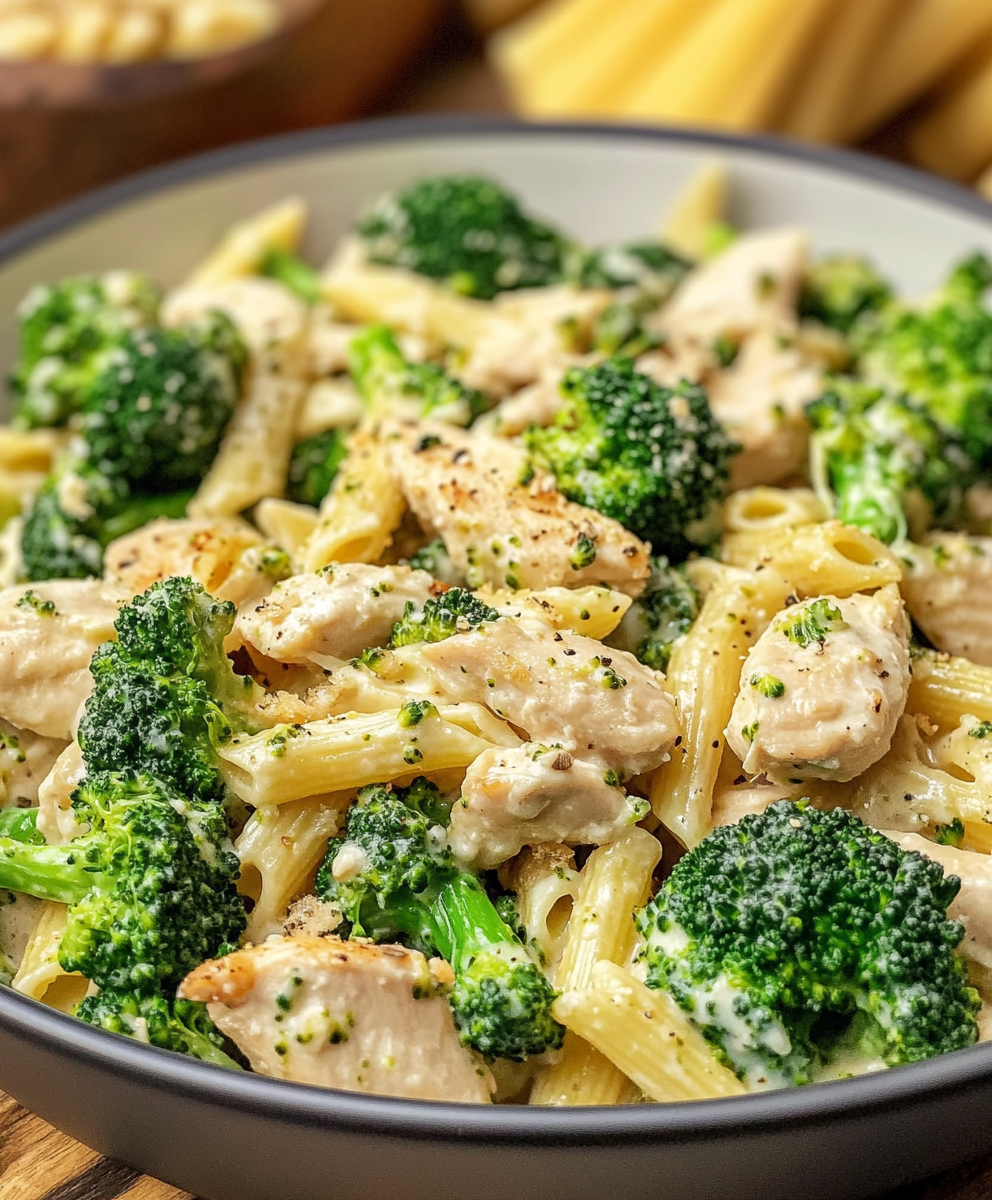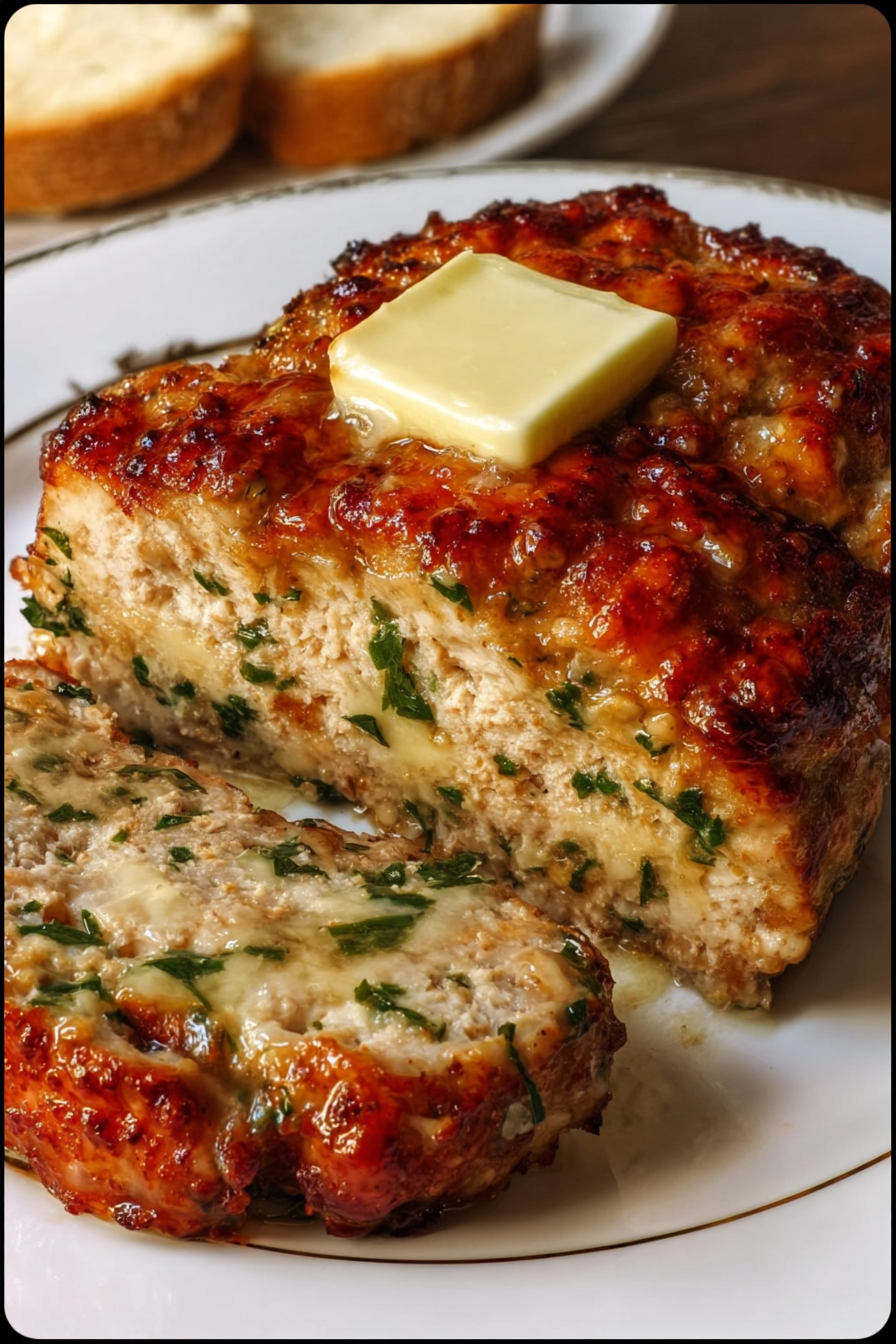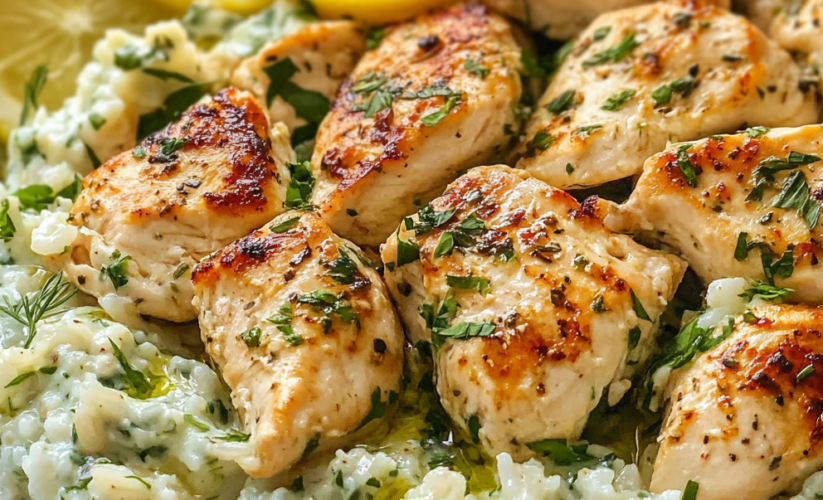
Dump-and-Bake Chicken Tzatziki with Rice
This is the dinner that proves “dump-and-bake” doesn’t mean dumping flavor—a complete Greek-inspired meal where chicken, rice, and vegetables cook together in a creamy, herb-infused sauce, emerging from the oven as restaurant-worthy fare with virtually no effort. It’s the answer to every busy weeknight when you crave something special but have neither time nor energy for complicated cooking. One dish, one hour, and you’re sitting down to tender chicken over perfectly cooked rice with that tangy, cooling tzatziki flavor infused throughout.
Ingredients
For the Bake:
- 1½ pounds boneless, skinless chicken thighs
- 1½ cups long-grain white rice (not instant)
- 2¾ cups chicken broth
- 1 cup plain Greek yogurt
- 3 cloves garlic, minced
- 2 tablespoons olive oil
- 2 tablespoons fresh lemon juice
- 1 tablespoon dried dill (or 3 tablespoons fresh)
- 2 teaspoons dried oregano
- 1 teaspoon salt
- ½ teaspoon black pepper
- ½ teaspoon paprika
- 1 medium cucumber, diced
- 1 cup cherry tomatoes, halved
- ½ red onion, sliced thin
- ½ cup kalamata olives, pitted and halved
- 4 ounces feta cheese, crumbled
For the Tzatziki Topping:
- 1 cup Greek yogurt
- 1 cucumber, grated and squeezed dry
- 2 cloves garlic, minced
- 2 tablespoons fresh dill, chopped
- 1 tablespoon olive oil
- 1 tablespoon lemon juice
- ½ teaspoon salt
- ¼ teaspoon white pepper
For Serving:
- Fresh dill sprigs
- Lemon wedges
- Warm pita bread
- Extra crumbled feta
- Hot sauce (optional)
Instructions
- Preheat and Prep: Preheat oven to 375°F. Spray a 9×13 inch baking dish with cooking spray. This size is crucial—smaller crowds ingredients, larger spreads them too thin for proper cooking.
- Create the Base: Spread uncooked rice evenly in prepared baking dish. The rice will absorb all the flavorful liquids while cooking, becoming infused with Greek flavors rather than plain.
- Mix the Liquid: In large bowl, whisk together chicken broth, Greek yogurt, minced garlic, olive oil, lemon juice, dill, oregano, salt, pepper, and paprika until smooth. The yogurt may look lumpy initially but will smooth out.
- Pour and Stir: Pour yogurt mixture over rice, stirring gently to ensure rice is evenly moistened. This prevents dry patches and ensures uniform cooking. The liquid should completely cover the rice.
- Nestle the Chicken: Lay chicken thighs on top of rice mixture. Don’t push them down—they should rest on surface. Season tops with additional salt, pepper, and paprika for color and flavor.
- Add Vegetables: Scatter diced cucumber, tomatoes, onion, and olives around chicken. They’ll release juices during cooking that flavor the rice while maintaining some texture.
- Cover and Bake: Cover dish tightly with aluminum foil. Bake for 45 minutes. The tight seal traps steam for perfectly cooked rice and moist chicken.
- Uncover and Finish: Remove foil, sprinkle feta cheese over top. Bake uncovered 15 minutes more until chicken reaches 165°F internal temperature and top is lightly golden.
- Rest and Prepare Tzatziki: Let rest 10 minutes while making tzatziki. Mix all tzatziki ingredients in bowl. The resting time allows rice to absorb any remaining liquid.
- Serve with Style: Serve hot, topped with dollops of fresh tzatziki, fresh dill, and lemon wedges. The cool tzatziki contrasts beautifully with the warm, savory bake.
Recipe Notes
- Prep Time: 15 minutes
- Bake Time: 60 minutes
- Rest Time: 10 minutes
- Total Time: 1 hour 25 minutes
- Servings: 6
- Calories: 420 per serving
The Genius of One-Dish Greek Cooking
This recipe transforms the dump-and-bake concept by incorporating classic Greek flavors and techniques into an American convenience format. Traditional Greek cooking often involves layering flavors through multiple steps, but here we achieve similar complexity through strategic ingredient placement and timing.
The key lies in understanding how flavors release during baking. Garlic and herbs in the liquid infuse the rice from below. Chicken renders its juices from above, creating a two-directional flavor exchange. Vegetables release moisture that prevents drying while adding their distinct tastes. It’s orchestrated chaos that results in harmonious flavor.
Using chicken thighs instead of breasts is non-negotiable for this method. Their higher fat content means they stay moist during the long baking time while contributing richness to the rice below. Breasts would dry out, creating disappointing protein atop perfectly cooked rice. The dark meat also provides more flavor, essential when seasoning opportunities are limited.
Rice Success Secrets
Long-grain rice is crucial for this recipe’s success. Its lower starch content means individual grains stay separate rather than becoming mushy. Jasmine or basmati work beautifully, adding subtle fragrance. Avoid short-grain or arborio—they’ll create risotto-like texture rather than distinct grains.
The liquid-to-rice ratio might seem high, but it accounts for evaporation and absorption by other ingredients. The Greek yogurt doesn’t count as full liquid since its proteins will firm during cooking. This calculated ratio ensures perfectly cooked rice—neither crunchy nor mushy.
That initial stirring distributes liquid evenly, preventing the common dump-and-bake problem of burnt edges and raw centers. Every grain needs moisture contact to cook properly. The brief mixing also begins dissolving the yogurt, creating more uniform sauce.
The Greek Yogurt Innovation
Using Greek yogurt in the cooking liquid serves multiple purposes beyond flavor. Its acidity tenderizes the chicken like a marinade would, but during cooking rather than before. The proteins in yogurt help create a creamy sauce without the heaviness of cream-based casseroles.
The yogurt will look curdled when first mixed—this is normal. The proteins are simply reacting to the acid from lemon juice. During baking, everything smooths out as proteins denature and restructure, creating silky sauce that coats each grain of rice.
Temperature matters when mixing. Room temperature yogurt incorporates better than cold. If you forget to remove it from the fridge, microwave 15 seconds to remove chill. This prevents lumps and ensures smooth distribution throughout the dish.
Strategic Vegetable Placement
The vegetables aren’t random additions—each serves specific purposes. Cucumber might seem odd to bake, but it releases moisture that keeps everything from drying while mellowing into a zucchini-like texture. Choose firm cucumbers and dice larger than usual to maintain some structure.
Cherry tomatoes burst during baking, creating pockets of bright acidity that cut through the rich sauce. Halving them ensures even distribution and prevents whole tomatoes from dominating single bites. Their juice also contributes to the cooking liquid.
Red onion and olives provide classic Greek flavors while adding textural variety. The onion sweetens during baking, losing its sharp bite. Kalamata olives are traditional, but any brined olive works. Their saltiness means careful seasoning elsewhere—taste before adding more salt.
The Foil Factor
That tight foil covering isn’t just about containing mess—it’s essential for proper cooking. The seal traps steam, creating a moist environment that cooks rice evenly while keeping chicken juicy. Gaps or loose covering allow steam escape, resulting in crunchy rice and dry chicken.
Heavy-duty foil works best, preventing tears from steam pressure. If using regular foil, double layer for insurance. The shiny side facing down reflects heat back onto food, though the difference is minimal. What matters is the tight seal around edges.
Removing foil for the final 15 minutes serves dual purposes: allowing excess moisture to evaporate for proper rice texture and creating appealing golden color on chicken. This uncovered time also concentrates flavors as liquids reduce slightly.
Temperature and Timing Precision
The 375°F temperature balances multiple needs. Hot enough to cook chicken thoroughly while cold ingredients warm up, but gentle enough to prevent rice scorching. Higher temperatures rush the process, creating burnt bottoms before centers cook. Lower temperatures extend cooking unnecessarily.
That 45-minute covered time allows rice to fully hydrate and cook while chicken reaches safe temperature. The 15-minute uncovered finish isn’t arbitrary—it’s calculated to achieve 165°F internal temperature while developing color. Always verify with thermometer—visual cues can deceive.
The 10-minute rest might seem skippable when dinner’s ready, but it’s crucial. Rice continues absorbing liquid, firms to proper texture, and temperature equalizes throughout. Cutting chicken immediately releases juices that should redistribute through meat. Patience rewards with better texture.
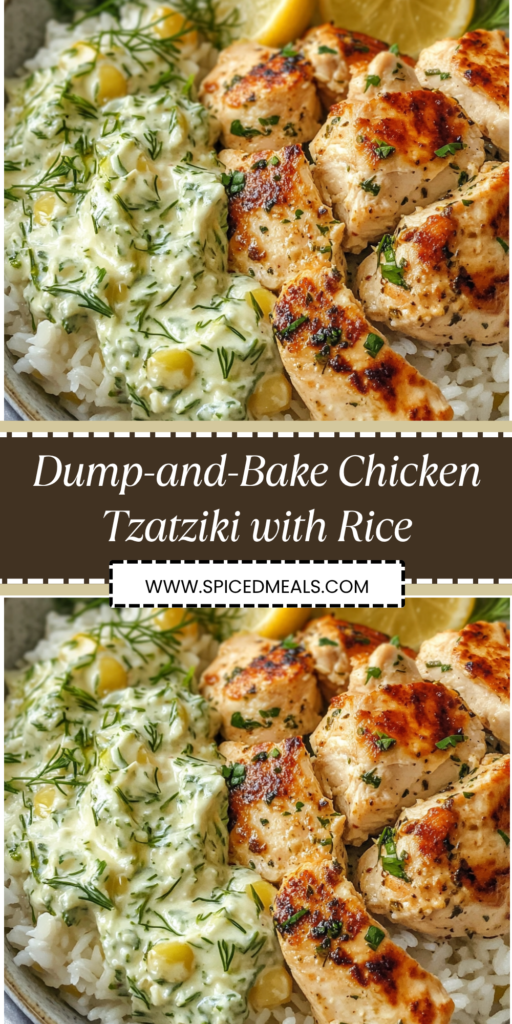
Fresh Tzatziki Transformation
The fresh tzatziki topping elevates this from good to extraordinary. While the baked dish incorporates tzatziki flavors, the fresh version provides cooling contrast and brightness that cuts through richness. It’s the same principle as adding fresh herbs to cooked dishes—reviving flavors dulled by heat.
Properly draining cucumber is non-negotiable for good tzatziki. Grate cucumber, salt lightly, let sit 10 minutes, then squeeze in clean kitchen towel. This removes excess moisture that would thin the sauce. Skip this step and you’ll have watery disappointment instead of creamy sauce.
Make tzatziki while the dish rests for optimal timing. The flavors need a few minutes to meld anyway. If making ahead, store covered in refrigerator up to 3 days. The garlic intensifies over time, so use less if preparing in advance.
Customization Options
Protein Swaps: Lamb chunks create more authentic Greek flavor but need 15 minutes longer cooking. Chickpeas work for vegetarian version—add during last 15 minutes. Shrimp cook too quickly for this method unless added at very end.
Grain Alternatives: Orzo pasta substitutes beautifully—reduce liquid by ½ cup and cooking time by 10 minutes. Quinoa works with same liquid ratio but different nutrition profile. Cauliflower rice for low-carb requires major adjustments—better as separate recipe.
Vegetable Variations: Zucchini, bell peppers, or eggplant work wonderfully. Spinach wilts nicely when stirred in during final 5 minutes. Artichoke hearts add luxury. Adjust cutting size based on cooking time—longer cooking needs larger pieces.
Spice Adventures: Add preserved lemons for authentic Mediterranean flavor. Sumac provides tartness without liquid. Za’atar transforms this into Middle Eastern fusion. Start conservative with new spices—the long cooking intensifies flavors.
Troubleshooting Common Issues
“Rice is crunchy”: Insufficient liquid or loose foil seal. Ensure tight covering and accurate liquid measurement. Your oven may run hot—reduce temperature 25°F next time.
“Everything’s mushy”: Too much liquid or overcooking. Reduce broth by ¼ cup if using very juicy tomatoes. Check at 40 minutes next time—ovens vary significantly.
“Chicken dried out”: Probably used breasts instead of thighs, or internal temperature exceeded 165°F. Thighs forgive overcooking better. Consider meat thermometer investment.
“Bland flavor”: Under-seasoned at multiple points. Season chicken separately, taste cooking liquid before baking, adjust final seasoning. Greek food should be boldly flavored.
“Yogurt sauce separated”: Normal appearance—stir before serving. If bothers you, use full-fat yogurt next time for more stable proteins.
Make-Ahead Strategies
This dish assembles beautifully in advance. Combine everything except feta in baking dish, cover tightly with plastic wrap then foil, refrigerate up to 24 hours. Add 10 minutes to baking time from cold. Perfect for entertaining or meal prep.
Leftovers transform wonderfully. The flavors meld overnight, creating even better taste. Reheat covered in 350°F oven with splash of broth to refresh moisture. Microwave individual portions with damp paper towel covering.
Freeze assembled but unbaked for future dinners. Thaw overnight in refrigerator before baking. The texture changes slightly but remains delicious. Having homemade convenience food defeats takeout temptation.
Serving Suggestions
While complete as-is, accompaniments elevate the experience. Warm pita bread soaks up flavorful sauce beautifully. A simple Greek salad provides fresh contrast. Hummus and baba ganoush create mezze-style spread for special occasions.
Wine pairing enhances the Greek theme. Crisp Assyrtiko or Pinot Grigio complement without overwhelming. For reds, light Agiorgitiko or Pinot Noir work. The dish’s richness handles wine better than you’d expect from chicken and rice.
Present family-style directly from baking dish for casual dinners. For company, plate individually with extra tzatziki drizzle and fresh dill garnish. The rustic nature suits informal gatherings perfectly.
Nutritional Benefits
Despite its creamy appearance, this dish offers balanced nutrition. Greek yogurt provides protein and probiotics. Vegetables add fiber and vitamins. Olive oil contributes healthy fats. Using brown rice increases fiber further, though cooking time extends 10-15 minutes.
The dump-and-bake method requires no added fats beyond what’s in ingredients. Traditional cooking might use butter or oil for sautéing. Here, natural juices and yogurt provide moisture without excess calories.
Portion control happens naturally—the complete meal satisfies without requiring seconds. The protein-carb-vegetable balance creates lasting satiety, preventing post-dinner snacking.
Final Thoughts
This Dump-and-Bake Chicken Tzatziki with Rice proves that convenience cooking can deliver sophisticated flavors worthy of any Greek taverna. It respects your time without disrespecting your taste buds, creating a complete meal that requires nothing more than mixing, dumping, and waiting. The combination of tender chicken, perfectly seasoned rice, and fresh tzatziki creates layers of flavor and texture that belie the simple preparation. Master this recipe and you’ll have a reliable weeknight dinner that feels special enough for weekends, proving that sometimes the best cooking happens when you do the least.


